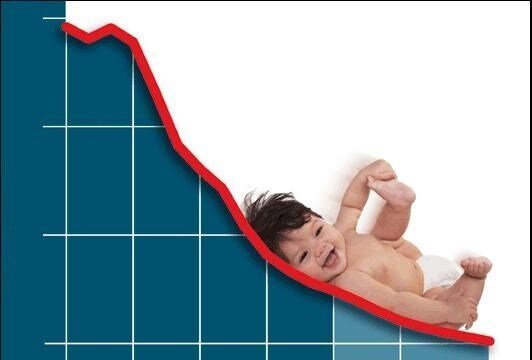Iran's fertility rate alarmingly low

No more than a decade ago, Iran boasted one of the world's youngest populations all thanks to a baby boom that began in the mid-seventies and reached its peak soon after the revolution of 1979. Millions of Iranian baby boomers are now either reaching middle-age or are well into it.
The population that, not too long ago, was among the world's youngest is according to some estimates going to be among the eldest in two decades if the fertility rate remains low. The Iranian Health Ministry says the rate among Iranian women has dropped 25% just over the past four years.
Based on statistics, the decline in birth rates in Iran over the past few years means the number of babies born each year is now around 1.6 percent per woman. That’s well below the 2.1 percent replacement fertility level necessary to sustain population.
The director general of the ministry’s department of population, family and school health described this downward trend as extremely worrisome. Hamed Barakati warned recently that Iran is running into trouble so fast that there is little time left for intervention. Economic factors seem to be at play here.
Young Iranians have been finding it increasingly difficult to get married, and more young married couples are choosing not to have babies, or have only one child. Statistics show the number of childless families or those with only one child has gone up more than 5.6 % over the past decade.
39-year-old Ahmad, a Tehran-based office worker and his 35-year-old working wife, who live in a rented flat have been married for four years. Still they cannot make up their mind about having children.
"Any couple would like to have children at some point, but we know taking care of a baby takes time and money. We cannot afford that right now," he says. "We prefer to put it off until we are financially more stable."
That is the story of a large number of married couples who are even lucky enough to have jobs. For young unmarried Iranians, many struggling to find jobs, the economic downturn has made it almost impossible to even start a family.
Iran's Leader Ayatollah Seyyed Ali Khamenei has repeatedly urged the people to have more babies, and wants officials to make it easier for families to have children. Figures show this is not happening.
The government has made it clear that it is determined to reverse this worrisome downward trend of fertility rates. But that's easier said than done especially at a time of unprecedented economic hardship largely caused by sanctions and an inefficient system.
The Iranian currency has suffered a steep fall over the past few years and the skyrocketing rate of inflation has left many Iranian families struggling to make ends meet. The prolonged coronavirus misery is certainly adding to the long list of problems facing the Iranians.
The grim situation has led to a heightened sense of uncertainty about the future and this widespread sense of insecurity is fueling the problem with Iran's population growth.
The government has been working on a package of incentives to prevent population decline. Authorities are planning to offer low interest loans for each newly-born baby and grant a piece of land to parents who have a third child among other steps.
Even if the government is serious about averting this emerging national crisis, success is not guaranteed. Because it could take much more than such incentives – maybe a meaningful improvement in standard of living in Iran- to convince families to get onboard.
